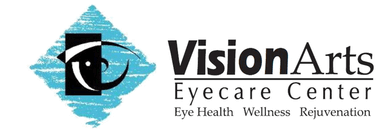What’s the difference between a vision test and a vision screening? If you consider the vision test as the “goal” of having a comprehensive eye exam at regular intervals throughout your life, then a vision screening is one way to reach that goal. Vision screening sometimes determines an immediate need for vision testing.
It’s important to not confuse the two. A vision screening is not a substitute for a vision test or comprehensive eye exam performed by an eyecare professional. But it can play an important role in helping numerous groups get the vision testing they need.
Vision screening is…
A set of simple eye tests to help identify people who may have certain eye problems. Often performed by pediatricians, school nurses, assisted living caregivers and other healthcare professionals and volunteers, vision screening usually includes a vision test for your ability to see clearly at distances using the “Big E” chart (Snellen chart).
A vision screening may also include testing of your eye’s reaction to light, muscle coordination, or by viewing simple images and graphs that could reveal colorblindness or other hidden problems. The vision test you take to get your driver’s license is an example of a vision screening.
Community health organizations, public schools, wellness clinics, and assisted living facilities often offer vision screening as part of their services. Given at important intervals in life, such as early childhood, pre-teen years, and as you age, vision screening can help monitor the quality of your vision, and possibly identify common vision problems.
But they’re not a substitute for a complete vision test given by an eyecare professional.
Vision testing is…
A comprehensive set of eye tests performed by an eyecare professional in a controlled office setting with equipment that goes far beyond what’s available at a vision screening.
Often performed with eyedrops that help the pupil “open up” (dilation), vision tests commonly include testing of vision at multiple distances, peripheral vision testing, and a series of procedures designed to check the structures of the eye for evidence of eye disease or eye problems like age-related macular degeneration, glaucoma, cataracts or diabetes.
A vision test from a qualified eyecare professional is important because many of the things hidden or unknowable at a vision screening, reveal themselves under closer professional observation.
And just as importantly, only an eyecare professional can direct you to the treatment necessary to improve your vision or protect your eyes—a prescription for corrective lenses, medications to treat common eye problems, or a wide variety of surgical options now available to people with eye problems.
Vision test: How often?
As a general rule of thumb, it’s a good idea to have a comprehensive eye exam and vision test at least every two years. This especially includes children below the age of 5, who may not fully understand that they’re even having a vision problem until they undergo a professional vision test.
Vision can change rapidly throughout childhood. Regular vision testing is a quick and smart way to keep up with those changes.
In many instances, more frequent vision testing is recommended. If you have diabetes, for example, you are at higher risk for developing glaucoma, cataracts and diabetic retinopathy–damage to the blood vessels in the retina. After age 35, the risks increase for a host of age-related eye problems or diseases such as presbyopia, macular degeneration, and cataracts.
A comprehensive eye exam every year is not unheard of. Vision tests are convenient and protect your eyes in the short term, and long term.
Special thanks to the EyeGlass Guide, for informational material that aided in the creation of this website. Visit the EyeGlass Guide today!
